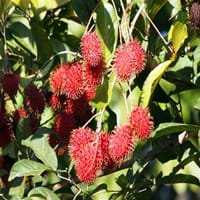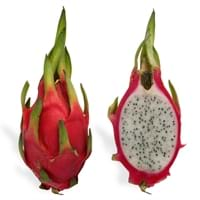Health Benefits
Anti-oxidant properties, Boosts immune system, Skin rejuvenation, Strengthening of bones
Anti-oxidant properties, Anti-aging benefits, Maintains healthy cholesterol level, Weight loss properties
General Benefits
Antiseptic properties, Cures headache, Removes waste from kidney
Helps in weight loss, Suppresses Arthritis
Skin Benefits
Hydrates skin
Anti-aging benefits, Heals sunburn, Treatment of acne
Hair Benefits
Good conditioner
Treatment of colored hair
Allergy Symptoms
Chest pains, Rhinitis, Wheezing
NA
Lactating Women
Yes
Not Available
Best Time to Eat
As a snack in the late afternoon, Don't consume at night and before bed, Eat the fresh ones, avoid mixing with any other foods, don't eat after meal., Morning time (before lunch)
Any time except an hour after meal, Don't consume at night and before bed
Vitamin A (Retinol)
Not Available
Vitamin B5 (Pantothenic Acid)
Not Available
Vitamin B6 (Pyridoxin)
Not Available
Vitamin B9 (Folic acid)
Not Available
Vitamin C (Ascorbic Acid)
Vitamin E (Tocopherole)
Not Available
Vitamin K (Phyllochinone)
Not Available
Lutein+Zeaxanthin
Not Available
Phytosterol
Not Available
Calories in Fresh Fruit with Peel
Calories in Fresh Fruit without Peel
Not Available
Not Available
Calories in Frozen Form
Not Available
Calories in Dried Form
Not Available
Calories in Canned Form
Not Available
Calories in Jam
Not Available
Type
Tree fruit, Tropical
Berry, Citrus, Fruit vegetable, Melon, Tree fruit, Tropical
Season
Early summer, Early winter, Late fall, Late spring
Early fall, Summer
Varieties
Rongrien, Chompu, Rapiah, Bingjai and Lebak Bulus
Selenicereus megalanthus and Hylocereus polyrhizus
Color
Coral red, Yellow
Magenta, Pink
Inside Color
Greyish-white
White
Origin
Unknown
Central America, Mexico
Climatic Conditions
Humid
NA
Facts about
- Oils extracted from its seeds is used to make soaps and candles.
- 'Rambut' means hairy in Malay.
- It makes the best hair mask.
- Seeds are edible and healthy too.
NA
Other Countries
Africa, India, Indonesia, Malaysia, Philippines, Sri Lanka
NA
Top Importer
Singapore
China
Top Exporter
Thailand
Vietnam
Botanical Name
Nephelium lappaceum
Hylocereus undatus
Synonym
Rambota
Pitaya, Red Pitahaya, Night blooming Cereus, Strawberry Pear, Belle of the Night, Conderella plant
Subkingdom
Tracheobionta
Tracheobionta
Class
Magnoliopsida
Not Available
Subclass
Rosidae
Liliidae
Order
Sapindales
Caryophyllales
Family
Sapindaceae
Cactaceae
Genus
Nephelium
Hylocereus
Species
N. lappaceum
H. undatus
Generic Group
Not Available
Cactus
Difference Between Rambutan and Dragonfruit
We might think that Rambutan and Dragonfruit are similar with respect to nutritional value and health benefits. But the nutrient content of both fruits is different. Rambutan and Dragonfruit Facts such as their taste, shape, color, and size are also distinct. The difference between Rambutan and Dragonfruit is explained here.
The amount of calories in 100 gm of fresh Rambutan and Dragonfruit with peel is 69.00 kcal and 60.00 kcal and the amount of calories without peel is Not Available and Not Available respectively. Thus, Rambutan and Dragonfruit belong to High Calorie Fruits and Low Calorie Fruits category.These fruits might or might not differ with respect to their scientific classification. The order of Rambutan and Dragonfruit is Sapindales and Caryophyllales respectively. Rambutan belongs to Sapindaceae family and Dragonfruit belongs to Cactaceae family. Rambutan belongs to Nephelium genus of N. lappaceum species and Dragonfruit belongs to Hylocereus genus of H. undatus species. Beings plants, both fruits belong to Plantae Kingdom.









